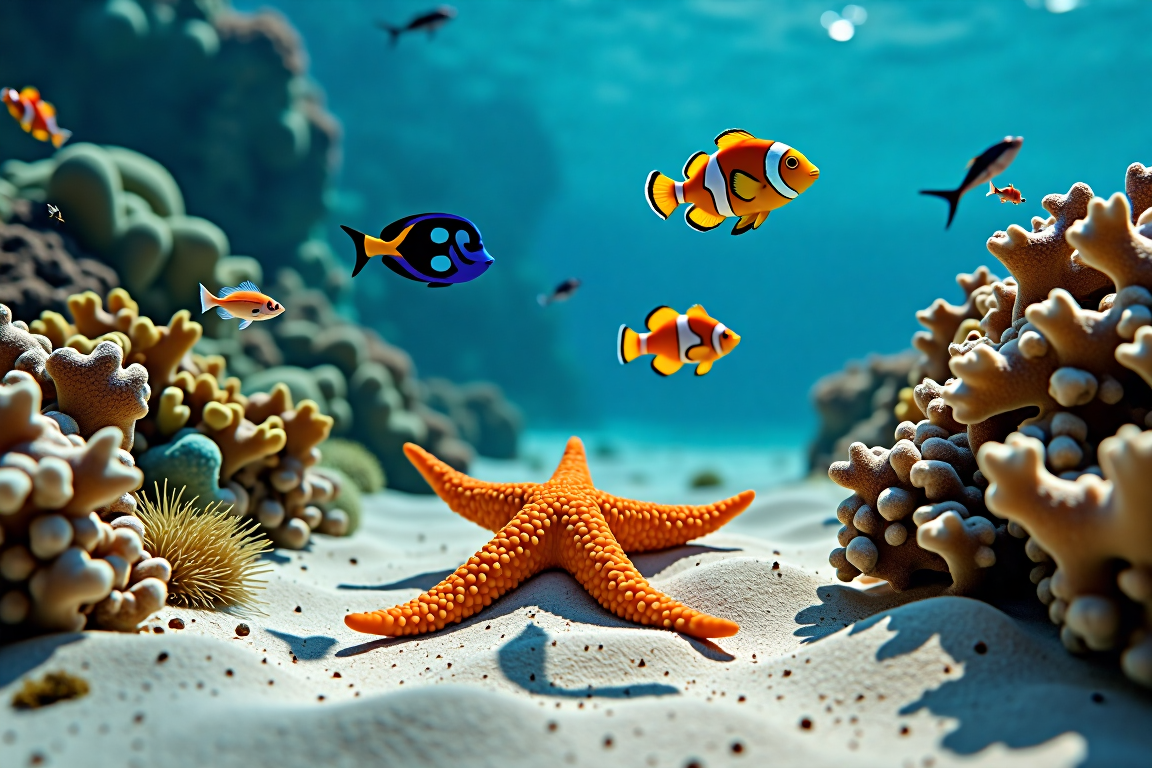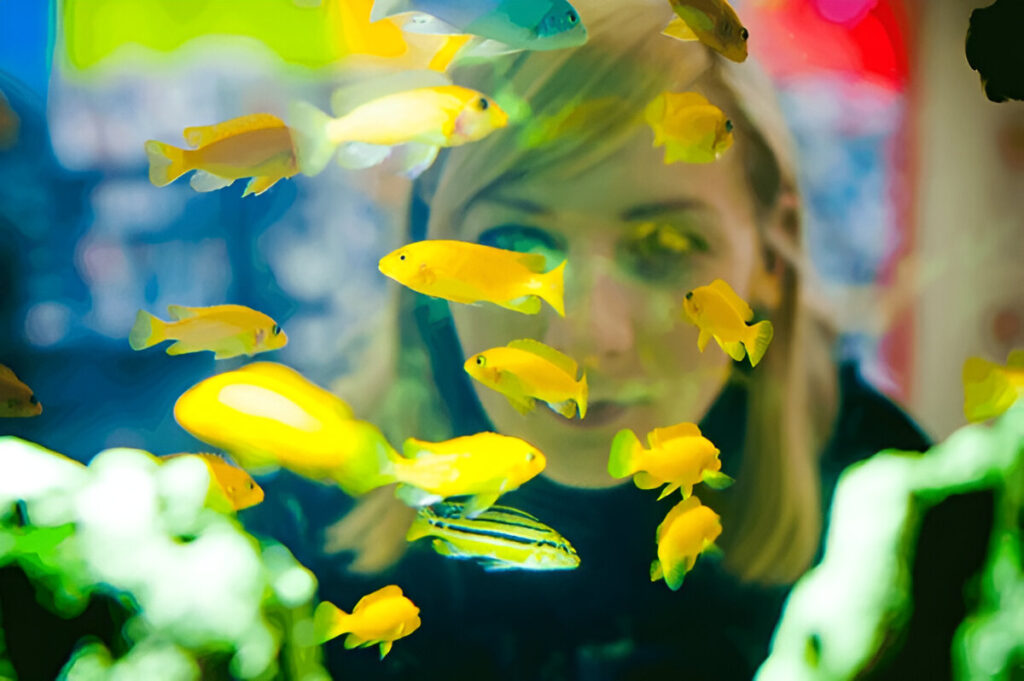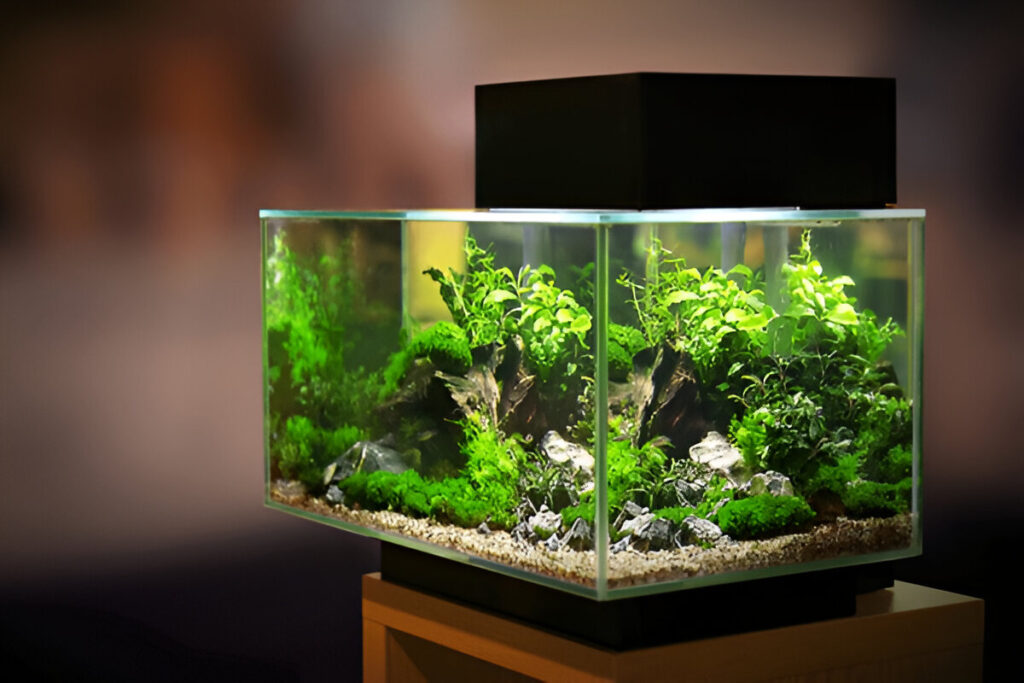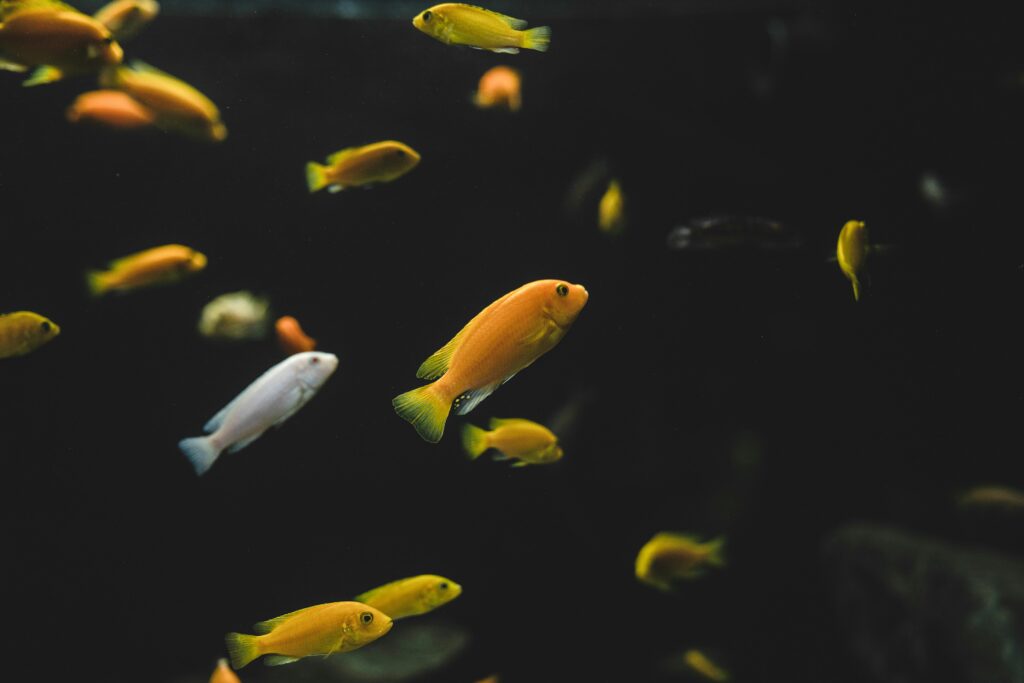Can Sand Sifting Starfish Live with Other Fish? A Comprehensive Guide
Sand sifting starfish (Astropecten polyacanthus) are fascinating creatures that play a unique role in marine aquariums. Known for their ability to clean the sandbed by consuming detritus and leftover food, they are a popular choice for saltwater tank enthusiasts. However, many aquarists wonder whether sand sifting starfish can coexist peacefully with other fish and invertebrates. In this blog, we’ll explore the compatibility of sand sifting starfish with other tank inhabitants and provide tips for creating a harmonious marine environment.
What Are Sand Sifting Starfish?
Sand sifting starfish are bottom-dwelling echinoderms that spend most of their time burrowing through the sand in search of food. They are highly efficient cleaners, helping to maintain a healthy and balanced aquarium by preventing the buildup of organic waste. Their unique feeding habits make them a valuable addition to many saltwater tanks.
However, sand sifting starfish have specific care requirements and behaviors that must be considered when introducing them to a community tank. Let’s dive into the key factors to consider when keeping them with other fish.
Compatibility of Sand Sifting Starfish with Other Fish
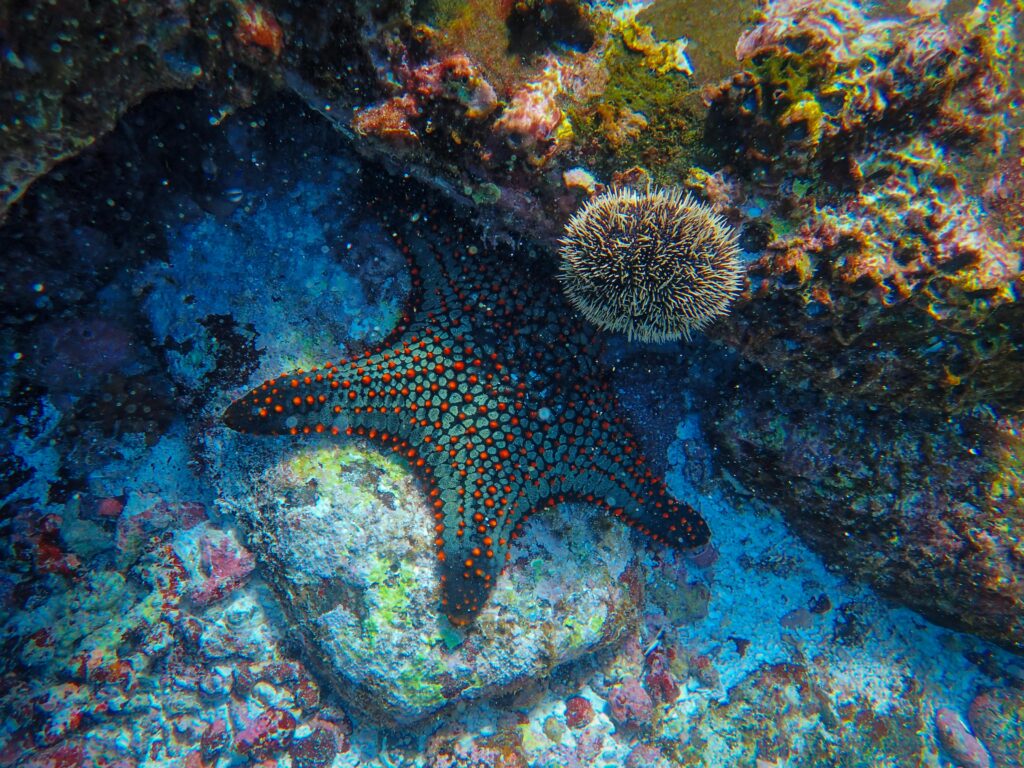
Sand-sifting starfish are among the most interesting and favorite aquarium starfish, in that they frequently sift through the sandbeds and provide great service to help maintain the cleanliness and good health of the substrate. Compatibility with other tank inhabitants is another important consideration necessary to ensure all can coexist in a non-eventful and non-stressful environment. Below is an expanded guide on compatibility with various fish, invertebrates, and corals.
1. Peaceful Tank Mates
Generally, sand sifting starfish are harmless and non-aggressive, suitable for being placed into community tanks where the fish are peaceful and non-predatory. Recommendations for good companions would include the following:
- Clownfish (Amphiprion spp.): These are popular reef fish that are rather docile, never bothering the starfish.
- Gobies (Gobiidae family): Several gobies exist, such as the watchman goby or diamond goby, that are bottom-dwelling fish compatible with sand sifting starfish; they can often share the sandbed without disputes arising.
- Cardinalfish (Apogonidae family): Small, nocturnal fish that do not harass the starfish and are pretty peaceful.
- Firefish (Nemateleotris spp.): Shy, calm fishes that would do great in company.
- Royal Gramma (Gramma loreto): Colorful, peaceful, and remains within the water column, well away from the sandbed.
These would barely compete for food or harass the starfish, so everything would live together quite harmoniously in a stress-free environment.
2. Avoid Aggressive or Predatory Fish
Sand sifting starfish are prone to being picked on, eaten, and harassed by active or predatory fish. These stars should be avoided with:
- Triggerfish (Balistidae family): Some Triggerfish are reported to be aggressive and even take a liking to nibbling the starfish.
- Pufferfish (Tetraodontidae family): Large puffers, with beaks, could decide to attack your starfish.
- Large Wrasses (Labridae family): Some wrasses, such as the humphead wrasse or larger fairy wrasses, may feed upon starfish.
- Lionfish (Pterois spp.): These predator fish might feed upon the starfish.
- Groupers (Epinephelinae family): Some larger groupers are predatory and can be considered a threat.
These fishes cause stress, damage, and kill the starfish, and as such it is better not to place them together.
3. Invertebrate Compatibility
Sand-sifting starfish can be kept with many invertebrates but must be used with caution with the following species:
- Compatible Invertebrates:
- Snails: Most snails, such as turbo snails or nassarius snails, are safe and won’t disturb the starfish.
- Hermit Crabs: Small hermit crabs are generally compatible, but monitor for any signs of aggression.
- Shrimp: Cleaner shrimp (Lysmata amboinensis) and peppermint shrimp (Lysmata wurdemanni) are peaceful and make good tank mates.
- Avoid:
- Larger Crabs: Emerald crabs (Mithraculus sculptus) or decorator crabs (Camposcia retusa) may attack or harm the starfish.
- Predatory Invertebrates: Mantis shrimp or larger crustaceans should be avoided, as they can prey on the starfish.
4. Coral Considerations
Most of the time, starfish are reef-safe as they don’t cause active harm to corals. However, there may be unintended effects that burrowing might have on your tank, and these include:
- Nature: Generally do not consume or damage any healthy coral.
- Possible Risks:
- Fragile Corals: Small or poorly attached corals like zoanthids or mushrooms could become dislodged when the starfish move along the sand.
- Sandbed Placement: Corals must be glued onto rocks or off the sandbed to prevent their accidental disturbance.
5. Tank Size and Environment
For the well-being of both sand sifting starfish and their co-inhabitants, the following should be put into consideration:
- Tank Size: It is highly recommended to have a larger tank with a minimum of 50-75 gallons capacity to allow the starfish to move around and sift without causing disturbances to other occupants.
- Sandbed Depth: A depth of a sandbed at least 2-3 inches is recommended to enable starfish burrowing and sifting as they naturally do.
- Food Availability: Sand sifting starfish are detritivores that feed on detritus, microorganisms, and small organisms within the sand. The tank should have a mature sandbed that would support adequate food sources. Very clean sandbeds may require supplemental feeding.
6. Behavioral Considerations
Nocturnal Activity: Many starfish are nocturnal and may therefore not be as active alongside the diurnal fish. Burrowing: Although it does have some good points about oxygenation of the sandbed, constant burrowing will cause aggravation to the bottom-dwelling fish or invertebrates who want the security of the same terrain all of the time.
Summary Table
| Category | Compatible | Avoid |
|---|---|---|
| Fish | Clownfish, Gobies, Cardinalfish, Firefish, Royal Gramma | Triggerfish, Pufferfish, Large Wrasses, Lionfish, Groupers |
| Invertebrates | Snails, Hermit Crabs, Cleaner Shrimp | Larger Crabs, Mantis Shrimp |
| Corals | Most Reef-Safe Corals | Fragile or Loosely Attached Corals |
Tank Requirements for Sand Sifting Starfish
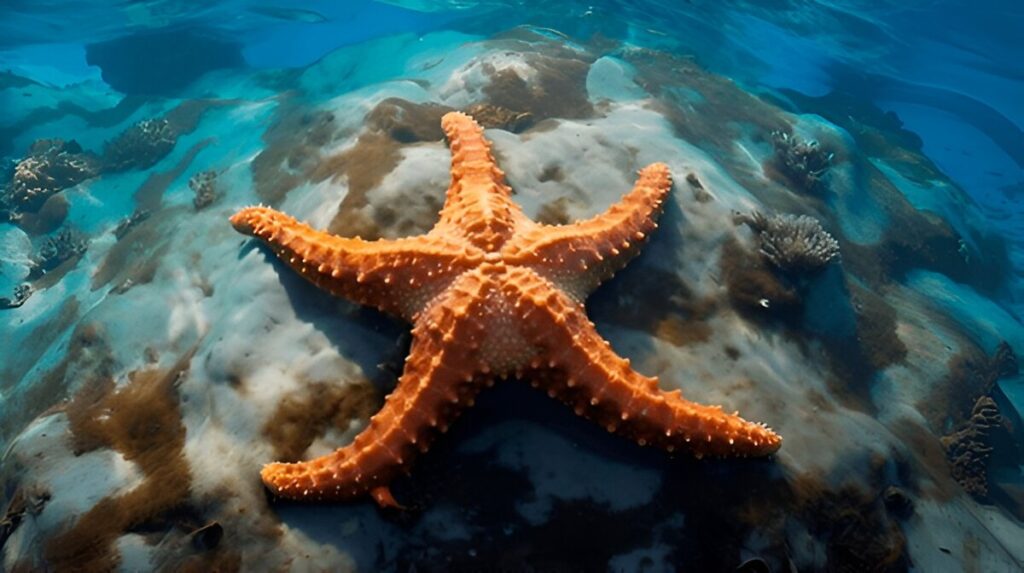
To ensure the health and well-being of your sand sifting starfish (Archaster typicus) and their tank mates, it’s crucial to provide an environment that simulates their natural habitat. Here’s a more detailed guide to setting up and maintaining a suitable tank:
a. Tank Size
- Minimum Tank Size: The absolute minimum for a single sand sifting starfish is a 50-gallon tank. However, larger tanks of 75–100 gallons or more are highly recommended, especially if you plan to keep multiple starfish or other tank mates.
- Sandbed Depth: Use a sand bed of a depth of 2–4 inches minimum so the starfish can easily burrow into the substrate and filter feed without complication. With a larger tank comes a more expansive sandbed-one of the biggest necessities for starfish to comfortably and naturally forage.
- Type of Substrate: The substrate should be fine, soft sand without sharp edges. Aragonite sand or oolitic sand is the best choice, as it is soft on the starfish’s delicate body and helps maintain stable water chemistry in marine tanks.
- Avoid Coarse Substrates: Coarse or crushed coral substrates can tear the tube feet and body of the starfish, which may result in injury or infection.
- Substrate Maintenance: Regular light stirring of the sandbed avoids the build up of toxic, even deadly (to the starfish and other tank animals) gases such as hydrogen sulfide.
b. Water Quality
- Temperature: Maintain temperature stable between 72–78°F (22–26°C). Sudden fluctuations can easily stress the starfish and weaken its immune system.
- Salinity: Keep the specific gravity within the range of 1.023–1.025, which is normal for marine aquariums. Monitor the salinity with a good hydrometer or refractometer.
- pH: Keep the pH at 8.1–8.4 to simulate natural seawater conditions.
- Ammonia, Nitrite, and Nitrate: These readings of ammonia and nitrite must be always at 0 ppm whereas nitrates below 10 ppm. This necessitates a routine change in water on a weekly or fortnight basis to be replaced with 10–20%.
- Calcium and Alkalinity: Stable calcium (380–450 ppm) and alkalinity (8–12 dKH) levels promote overall tank health and growth of the desired microorganisms in the sandbed for the starfish.
c. Filtration and Water Flow
- Filtration: Employ a good quality filtration system, like a canister filter, protein skimmer, or sump, to keep the water clean and free of waste. Keep the intake of the filter covered to prevent the starfish from getting sucked in.
- Water Flow: Create moderate water flow that would simulate natural currents of the ocean. Avoid hard direct flow that can dislodge or stress the starfish.
d. Feeding
- Natural Diet: Most sand-sifting starfish would feed on detritus, micro-fauna, or other organic materials buried in the substrate or sand bed. So, starfish may perform an important function in cleaning the substrate.
- Supplemental Feeding: Supplemental feeding may be required in established tanks with low levels of detritus. Provide sinking pellets, small pieces of meaty foods such as shrimp, fish, or squid, or special starfish food. Place the food near the starfish or directly on the sandbed.
- Frequency: Feed 1–2 times per week, depending on the availability of natural food sources in the tank. Overfeeding can lead to poor water quality.
e. Tank Mates
- Compatible Species: Sand sifting starfish are generally peaceful and can coexist with most non-aggressive marine species, such as clownfish, gobies, and small wrasses. Avoid keeping them with aggressive or predatory fish that may harm them.
- Invertebrates: Can usually be safely housed with other invertebrates that burrow into the sand, such as sea cucumbers or snails that burrow; caution should be exercised, however, since they will compete for both food and space.
- Coral Considerations: Sand sifting starfish are reef-safe and will not harm any corals. They may accidentally knock over frags or small corals placed on the sandbed, though.
f. Behavior and Health
- Burrowing Behaviour: The sand sifting starfish spends most of its time burrowing and sifting the sand. Lack of burrowing or general lethargy can be indicative of poor water quality, poor substrate, or lack of food.
- Health Monitoring: Regularly inspect the starfish for signs of stress or damage, such as lesions, discoloration, or missing limbs. Healthy starfish should have a firm body and active tube feet.
- Handling: Avoid handling the starfish as much as possible. If necessary, gently guide them using a soft tool or your hand (after rinsing with tank water to remove contaminants).
g. Special Considerations
- Acclimation: Drip acclimation is highly recommended for any starfish, especially a sand sifting starfish, over 1–2 hours to get them acclimated to the new water parameters.
- Tank Maturity: Starfish do very well in well-established tanks that have an established sandbed complete with microfauna and detritus. Avoid placing them in newly set-up aquariums.
- Population Control: Generally, one starfish is enough for a small tank. Overstocking might invite competition for food and rapid depletion in the sandbed of resources.
Potential Challenges of Keeping Sand Sifting Starfish
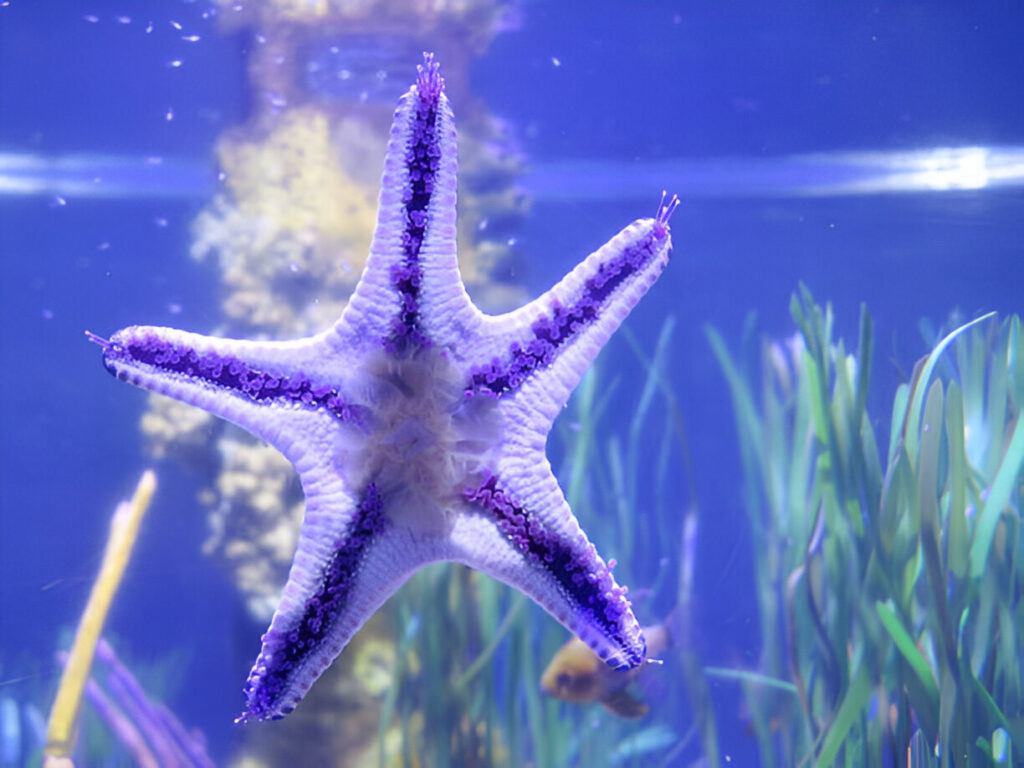
Starving in Clean Tanks
- Problem: Starving to death, the sand sifting starfish depend on organic waste, detritus, and microbial fauna within the sandbed for food. In tanks that have very clean sandbeds or low organic matter, they might starve to death.
- Solution: Monitor the animal regularly for activity and body condition, thin or less active animals may indicate starvation. Supplemental feeding of finely chopped seafood or sinking pellets as well as foods developed for starfish can be provided. Also, target feedings can be given by placing the food around burrows.
Burrowing Behavior
- Challenge: Starfish are burrowing naturally into the sandbed for food. That can be good for aerating the substrate, but it is also quite disruptive to the other tank inhabitants, such as small fish, invertebrates, or even corals. Such burrowing may displace and/or bury small corals or frags placed on the sandbed.
- Solution: Consider serious planning of tank layout. Not recommended to set direct on sandbed tender corals and frags. Let rock structures/coral mounts locate them above substrate. Besides that, make sure to have beds that are deep enough-in this case for at least 2-3 inches-so they can burrow into them without causing any disruption in the tank’s stability as a whole.
Sensitivity to Water Changes
- Challenge: Sand-sifting starfish are sensitive to sudden changes in water parameters like temperature, salinity, pH, and ammonia levels. They can be stressed or even killed by rapid fluctuations.
- Solution: Acclimate them to your tank gradually using the drip acclimation method over a period of 1-2 hours. Do regular testing in order to keep the water parameters stable. Never do huge water changes or sudden changes in temperature/salinity. Any adjustment to be done, has to be done with time.
Compatibility with Tank Mates
- Challenge: It is not the best choice to have sand-sifting starfish paired with aggressive fishes or invertebrates that may disturb or eat them. Their burrowing behavior tends to stress the bottom-dwelling species as well.
Solution: Before adding the Sand Sifting Starfish to your tank, research their compatibility with your current inhabitants. Avoid aggressive species or active predators of starfish. House them in an environment with plenty of hiding spots and low stress.
Risk of Predation
- Challenge: In a tank with more massive, active, aggressive fish or invertebrates, starfish can be likely to be one of the first targets for predation. The most likely would be puffers or large crabs.
- Solution: Do not keep predator species in your tank that look at the starfish as a meal. If you have a mixed reef tank, you can be choosy with regards to the selection of tankmates to avoid conflict.
Small Sandbed Size
- Challenge: Sand sifting starfish are in need of a sufficiently large sandbed to forage and thrive. In smaller tanks or tanks that have limited areas of sandbed, they quickly deplete available food sources, which may lead to starvation.
- Solution: Only add sand sifting starfish to tanks with sufficient area of sandbed. A general rule of thumb is to have at least 1 square foot of sandbed per starfish. In smaller tanks, consider other members of the cleanup crew that require less space.
Risk of Injury or Damage
- Challenge: Starfish are delicate creatures, easily injured by sharp objects, strong currents, and even the roughness associated with regular tank maintenance. Their arms are also extremely easy to damage.
- Solution: Acclimatize them gradually or introduce them into the tank with caution. Do not place them in a tank with sharp decorations or with very hard water flow to avoid injury. Check the starfish on a regular basis for any form of injury or damage.
Overpopulation Risk
- Problem: In well-fed tanks, sand sifting starfish might breed and then overpopulate the tank. This can stress the resources within the tank, further causing competition for food.
- Solution: Keep an eye on the population of sand sifting starfish within your tank. If you find their number increases, you can remove a few of them into other tanks, or even exchange them with other aquarists.
Tips for Introducing Sand Sifting Starfish to Your Tank
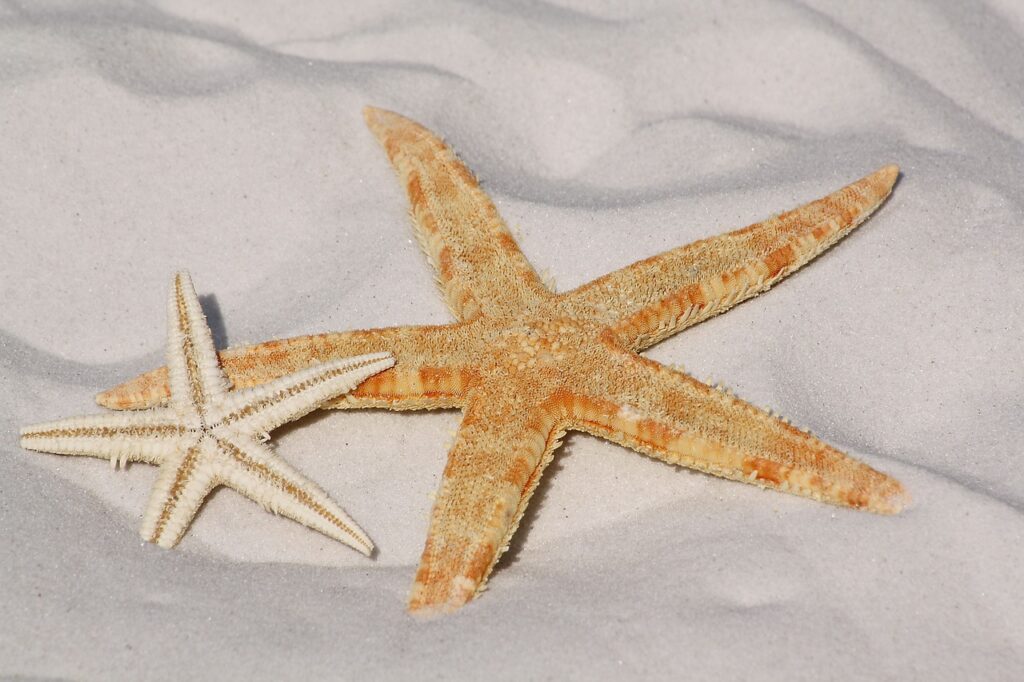
Image by Ursula Bodnar from Pixabay
- Quarantine New Additions: Always quarantine new fish or invertebrates before adding them to your main tank to prevent the spread of diseases.
- Monitor Behavior: Observe your sand sifting starfish and other tank mates closely after introduction to ensure they are getting along.
- Provide Hiding Spots: Include rocks, caves, and other hiding spots to reduce stress and provide refuge for all tank inhabitants.
- Avoid Overcrowding: Ensure your tank is not overcrowded, as this can lead to competition for resources and increased stress levels.
Conclusion
Sand sifting starfish can live peacefully with other fish and invertebrates, provided their specific needs and behaviors are taken into account. By choosing compatible tank mates, maintaining a suitable environment, and monitoring their health, you can create a thriving marine ecosystem that benefits from the unique contributions of these fascinating creatures.
Whether you’re a seasoned aquarist or a beginner, adding a sand sifting starfish to your tank can be a rewarding experience. Just remember to research and plan carefully to ensure the well-being of all your aquatic inhabitants. Happy reef-keeping!
Yuns Legdm is a passionate advocate for pet care and the founder of this website, dedicated to providing valuable information for fellow pet lovers and veterinary professionals worldwide. With a deep love for animals, Yuns created this platform to connect passionate pet owners with expert insights from veterinarians around the globe.
This website grows with you—the passionate pet owners and veterinary experts—creating a trusted space where knowledge, experience, and love for animals come together. Whether you’re seeking advice on pet health, nutrition, or general well-being, this platform is here to support you on your journey of responsible and loving pet care.

